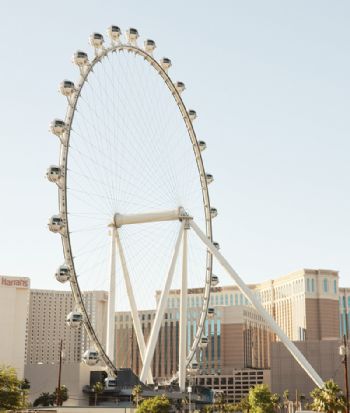
Thanks to SKF (
www.skf.com), the spherical roller bearing (SRB) that helps engineers to accommodate heavy radial and axial loads in applications prone to misalignment or shaft deflections celebrates its 100th birthday this year.
Developed in 1919 by SKF engineer Arvid Palmgren to complement the self-aligning ball bearing, due to its ability to accommodate misalignment under heavy loads, the initial SKF design has now become part of the largest family of products in the bearing industry.
These bearings can also be large in size.
For example, on the Las Vegas Strip in the USA, the High Roller ferris wheel (pictured) contains two of the largest SRBs ever produced by SKF, each weighing in at 8.8 tonnes; and at the Bahrain World Trade Center, SRBs used on the three wind turbines that are 29m in diameter and are installed between the two 240m-high towers.
Petra Öberg Gustafsson, product line manager (SRBs) at SKF, said: “From the very start, SKF has taken the lead in the development of self-aligning bearings.
“We introduced spherical roller bearings (SRBs) in 1919 and have been improving them ever since.
"Building on Arvid Palmgren’s original design, we now offer engineers the widest range of both open and sealed SRBs in the industry.
“With the continued push for high performance in ever more challenging environments, it will be interesting to see what the next 100 years of development generates!”